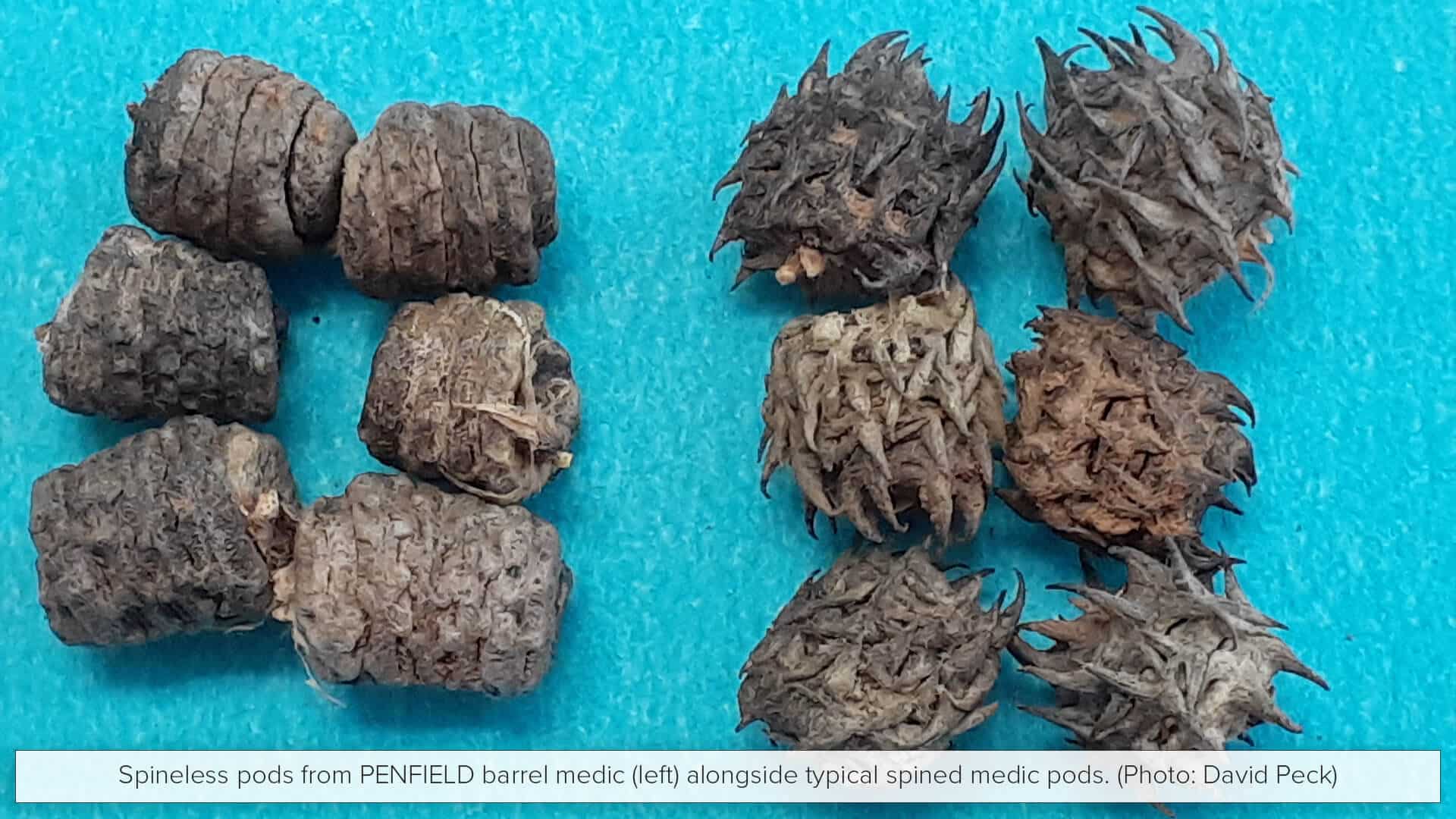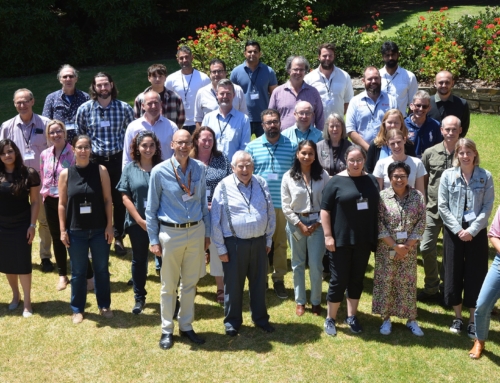APPF controlled environment growth chambers at The Plant Accelerator® have proved invaluable to a South Australian Research and Development Institute (SARDI) project that bred new pasture medic cultivars at least three years faster than conventional programs.
Being able to maintain optimal growing conditions throughout the breeding program has helped ensure seed will be delivered to farmers just six-and-a-half years from starting the breeding program, instead of the normal minimum of ten years.
SARDI Research Scientist David Peck said having access to a controlled environment was a key factor in the time saving.
“Using growth chambers allowed us to grow plants using extended photoperiod and late spring type temperature regimes.
“It maximised the growth rate for each generation, minimised time to flowering, and removed the variability of a glasshouse environment. The smaller chamber was also beneficial because we didn’t need to utilise a whole room.
Medics are a valuable pasture species for mixed enterprise farmers. They grow well on neutral to alkaline soils, provide high quality feed for livestock and improve the soil by fixing atmospheric nitrogen. Barrel medics are the most widely grown species. However, they have short spines on their seed pods that can catch in sheep’s wool. As a result, some farmers producing high quality wool will grow spineless burr medics even though their soils are better suited to barrel medics.
Now, Mr Peck and his team have bred a spineless barrel medic cultivar called Penfield, which is expected to be highly sought after by farmers producing super-fine wool.
Barrel medics are also susceptible to powdery mildew infection, which makes the plant unpalatable and impacts its ability to fix nitrogen for following cereal crops. Using the same speed breeding process, Mr Peck’s team were also able to develop a powdery mildew resistant cultivar called Emperor.
“We used speed breeding to maximise the number of generations we could grow per year,” Mr Peck said.
“As well as accelerating plant development and minimising time to flowering, the growth chambers allowed us to cross plants as soon as flowering occurred, instead of having to wait for flowering and suitable weather conditions to coincide.
“We further reduced generation time as we found an alternative method of overcoming physiological seed dormancy in barrel medics in four days, as opposed to the established method which required three weeks to overcome seed dormancy.
As a result of these improvements, the team was able to grow 12 generations of early-season medic in the controlled environment chamber at a rate of 5.1 generations per year to create the cultivar Penfield; and nine generations of mid-season medic at 3.9 generations per year, to produce Emperor.
Previous glasshouse-based medic breeding projects had only been able to grow 2 generations per year.
“As far as we know, this is the first time speed breeding principles have been used to develop annual pasture legume cultivars,” Mr Peck said.
“Our methods were more than two generations per year faster than other recent medic breeding programs, such as Sultan-SU and Jester-SU, which both used backcrossing breeding.
“The APPF facilities and staff greatly assisted the two new barrel medic cultivars being commercially available to farmers in a short time frame – and the success of this project shows that speed breeding could be used for other pasture legume species as well.”
APPF is supported by National Research Infrastructure for Australia (NCRIS).








